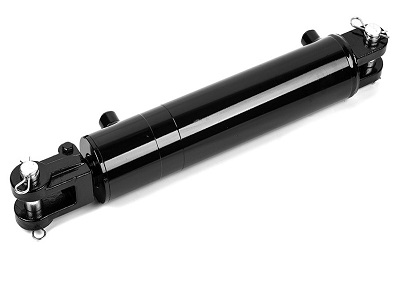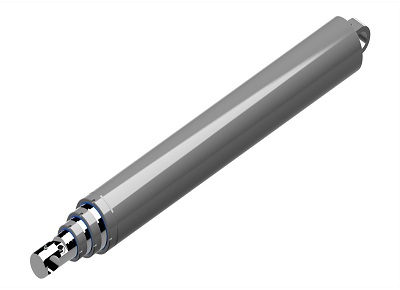Tie Rod Hydraulic Cylinders are a common hydraulic transmission device, consisting of a hydraulic cylinder tube, piston, and tie rod. Through the action of the hydraulic system, it converts the pressure of the liquid into mechanical energy to achieve movements such as stretching and compressing objects.
The hydraulic system transmits pressure through a liquid medium, which is usually oil. Under the pressure from the pump, the oil is sent into the hydraulic cylinder tube. Inside the hydraulic cylinder tube, there is a piston that is pushed by the pressure from the hydraulic system to achieve motion.
When the hydraulic pump operates, it sucks oil from the hydraulic oil tank and compresses it. The compressed oil is then transported through the hydraulic system's pipelines to one side of the hydraulic cylinder tube. Due to the oil pressure, the piston in the hydraulic cylinder is pushed to perform actions. In the hydraulic system, the oil on one side of the piston is discharged through an oil drain port and flows back into the hydraulic oil tank through the pipelines.
The hydraulic oil enters one side of the hydraulic cylinder tube through the pipelines, increasing the pressure on that side, which pushes the piston towards the other side. During this process, the tie rod achieves the stretching or compressing of the object through the tensile or compressive force of the piston. When the piston reaches the other side of the hydraulic cylinder tube, the hydraulic oil is discharged through the oil drain port on that side, completing a working cycle.
Pressure Generation: The hydraulic pump absorbs oil from the oil tank and generates hydraulic pressure through a pressure generation device (such as a hydraulic pump). This pressure acts on the oil, increasing the oil pressure.
Hydraulic Oil Transport: After being pressurized, the oil is transported along the pipelines of the hydraulic system to one side of the hydraulic cylinder tube. At this time, the oil in the hydraulic system fills one side of the hydraulic cylinder, increasing the pressure on that side.
Piston Movement: Under the pressure of the hydraulic oil, the piston inside the Tie Rod Cylinder is pushed to start moving towards the other side. The pressure from the side filled with hydraulic oil pushes the piston to the other side.
Oil Return: When the piston reaches the other side of the hydraulic cylinder, the oil on that side is discharged through an oil drain port and returns to the hydraulic oil tank. Meanwhile, the hydraulic system controls the flow and pressure of the hydraulic oil through pressure control valves and control valves.
Working Cycle Repeats: The pressure of the hydraulic oil continues to generate, making the piston move back and forth, repeating the working cycle. By adjusting the working pressure and flow rate of the hydraulic pump, the pressure and movement speed of the tie rod hydraulic cylinders can be controlled.
Tie Rod Hydraulic Cylinders operate on the basic principle of utilizing the pressure transmission of hydraulic oil in the hydraulic system to convert the pressure of the liquid into mechanical energy, thus achieving movements such as stretching and compressing objects. It is characterized by its simple structure, stable operation, and large output force, and is widely used in various mechanical equipment and industrial production.


